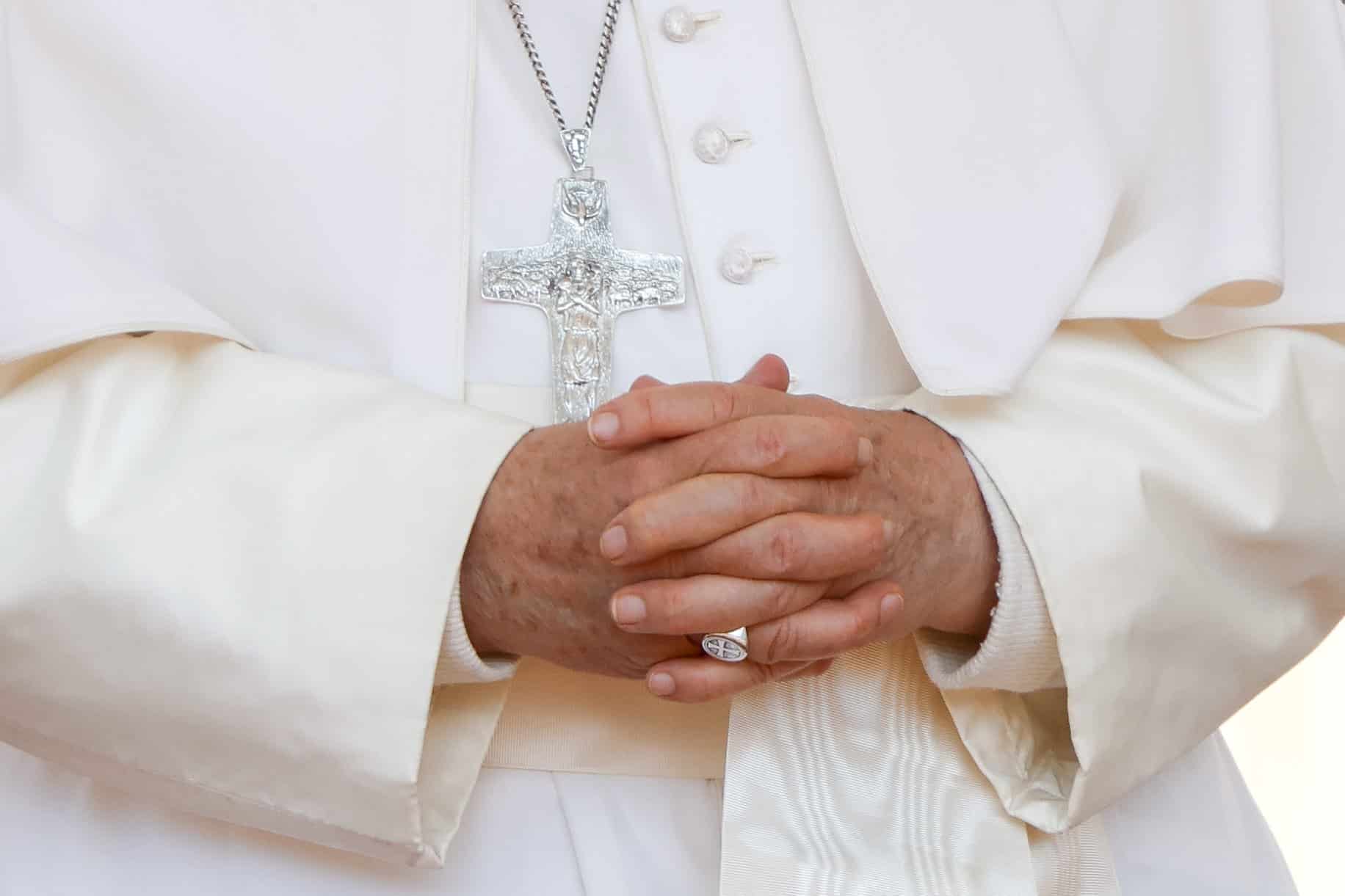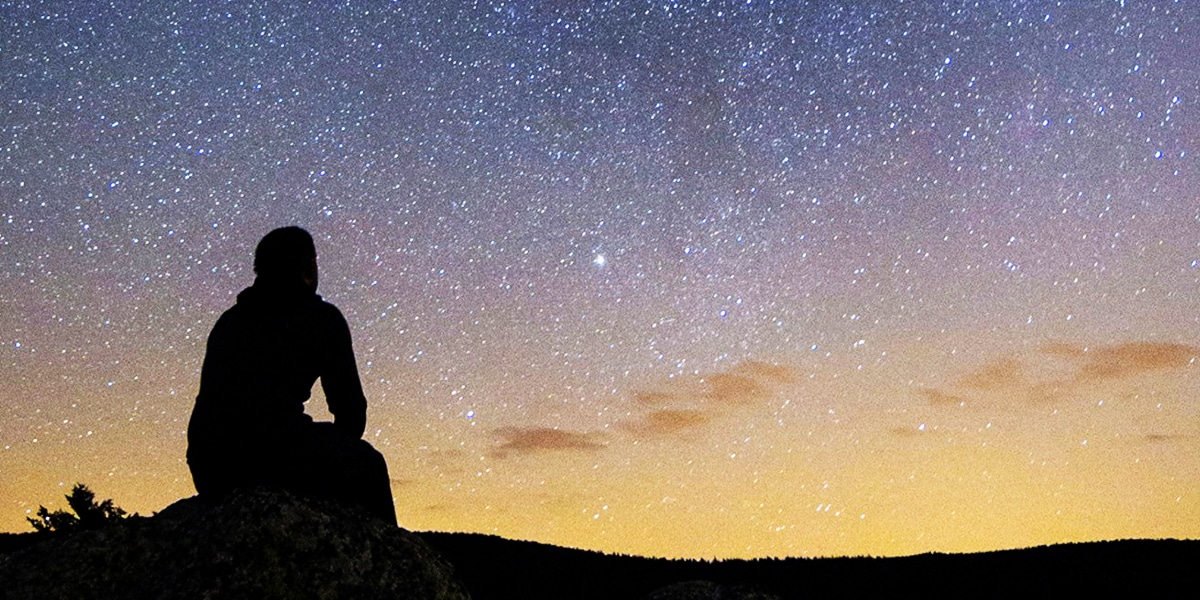Over the centuries, the word prayer has been distorted and trivialized. As I read Jesus’s attitude toward prayer in the Gospels, the use of the word in Paul’s letters, the teachings of the desert fathers and mothers, and the Philokalia of Eastern Christianity, I am convinced that prayer is first of all referring to an inner state, a state of conscious, choice-filled, loving union with what is in front of us—which is to be in union with God! That is what makes something—anything—a prayer.
But most of us have absorbed the idea of prayer as an action, a behavior, a recitation, a time period, an attendance at, a social gathering in which the divine is mentioned, a private time in which we think devout thoughts—and almost always with the assumption that this somehow pleases God. I am sure it does, since God seems to be easily pleased—all opinion to the contrary. The biblical God is seeking and wanting union with us much more than we are seeking union with him or her. In fact, I think this is the theme of themes of the whole biblical text, or as Rabbi Abraham Joshua Heschel says, “God is seeking man.”
Lest I fall into the dualistic thinking that I so often bemoan, I want to say that there can be true prayer in all of these actions or behaviors—whenever they proceed from—or lead to a state of conscious, loving union with what is. Then, and then alone, have we achieved the primary goal and the delicious fruit of prayer. As always, the pattern is both/and.
It is very important that this point is made at this time in history, because there are people of all religious denominations—including clergy—who appear to say prayers often and yet live very self-contained and self-satisfied lives of de facto hatred, racism, greed, classism, narcissism, and even terrorism. The very notion of prayer, I am afraid, can be easily used for egoic purposes and for the inflation of a superior self-image, as Jesus shows us in the Gospel Parable of the Pharisee and the Publican (Luke 18:9– 14). The text tellingly states that the Pharisee prays “to himself,” and “thanks God that he is not like” other people, who are supposedly inferior to him.
Prayer can be used to differentiate from and not be united with. The Pharisee is presented in complete counterpoint to the tax collector, who can only declare his foundational solidarity with all sinners and the universal need for divine mercy. This fully justifies him according to Jesus. It is quite obvious and yet still shocking when we realize that Jesus is not upset at sinners, but almost entirely at those who do not think they are sinners. The point cannot be made any clearer than here. Yet, one wonders how much Jesus’s brilliant parable has really guided organized Christianity—in any of its denominational forms. We have sought so many other ways to justify ourselves rather than owning our honest inability to be just, loving, and truly good. Is that perhaps what happens in real prayer?
Spirituality and Prayer
When Jesus goes into the desert for forty days (Matthew 4:1–11), he does not recite prayers or read the Hebrew Bible (the printing press had not been invented yet), yet it does appear from his thrice quoting of Deuteronomy that he had committed some biblical texts to memory. But here Satan knows and uses Scripture too, when he quotes Psalm 91 for his own dark purposes. Is there a message here? I surely think so (I am also aware that this is Matthew’s or Luke’s reading on Jesus’s experience, but that is all we have to go on, and it does make a brilliant piece of theology that would seem to apply to the Jesus we know).
The Gospels speak variously of Jesus “leaving the house early” and “going apart to a lonely place to pray” (Mark 1:35, along with various formulations in Luke 4:42 and 5:16, and Matthew 14:23). Could it be that it is much easier to live in this state of conscious, loving union with God when there is nothing else competing for our attention? Nothing else demanding our emotions? I would expect that to be the case, and it is often the experience for many of us on retreat, especially extended retreats.
In both Jesus’s desert initiation at the beginning of his ministry and his prayer in the garden of Gethsemane at the end, the emphasis seems to be that he goes alone and apart into nature—and not into temple or synagogue or any building humanly constructed. We are learning how important this is in the nature spirituality of people like Bill Plotkin and many other eco-theologians. Nature, the first Bible, might just be a major missing element in Christian spirituality and prayer.
The Gospels make no mention of Jesus reciting any formula prayers, except at the Last Supper where he and his disciples likely sung the Hallel, or Psalms 113–118 (Matthew 26:30) at the close of the Passover meal. So neither was Jesus in reaction against social or liturgical prayer, yet it is certainly not his emphasis.
This is quite interesting, given that later Orthodox and Catholic emphasis was clearly on public liturgy—and perhaps far too often this substituted for people and clergy who had no personal or conscious sense of loving union with God, but too often were trying to earn what they already had, by attending or performing such liturgies. Yet even such early stage bargaining can be, and often is, a starting point for authentic prayer. God is both humble and patient—and very enterprising.
It is interesting that the disciples ask Jesus for a formula, “just as John taught his disciples,” to define their identity and their group (Luke 11:1). One could easily conclude that he had not taught them any spoken or common prayers up to that point. It seems that for a spiritual group to be a group at all, it always needs its public prayer by which to define itself to itself and to the larger world. This is good and surely how the Our Father functions for the entire Christian spectrum to this day. We also see how this same need is felt by 12-Step groups with the Serenity Prayer and by many Catholics with the rosary.
My arguable assumption is, that what we know to glibly call prayer, was in the early centuries of Christianity often referred to as “rest,” “quieting,” and eventually “contemplation”—a word that gained broad and authoritative coinage in both the Eastern and Western churches, considering that it is not as such in the Bible. In each case, it had much more to do with seeking an inner state, a place of communion, a non-argumentative mind that was referred to as “the peace that the world cannot give” or “the pearl of great price” by early commentators, especially in the desert and Eastern realms of Christianity.
We in the West must accept that when we split from the Eastern Church in 1054, we also split from much of the practical teaching—and emphasis—on the contemplative mind. This teaching held sway in the East, starting with the desert fathers and mothers, and organically developed into the doctrine of theosis (divinization), and this split of practice and theory lasted until the modern era. (I fully recognize that many false forms of contemplation, and almost entirely inward focused liturgies, also created a kind of quietism in the East that made many issues of mission to others and social justice largely invisible.) Both the East and West lost by separating from one another.
Practice
All prayer is practicing for prayer. No one really knows how to pray, as Paul states in our epigraph at the beginning (Romans 8:26), and it is in this very experience of weakness and incapacity that the Spirit comes to pray in us, with us, and as us—with “groans unutterable” (Romans 8:27), which early on took the form of speaking in tongues (1 Corinthians 14:1–25) after the first Pentecost. Paul emphasizes that this early form of Christian prayer “does not feed the mind” or, in another translation, “my mind derives no fruit from it” (1 Corinthians 14:14). It was prayer at the prerational, transrational, or unconscious level, we might say today. It was done to us!
Already we have something deeper, at least partially proceeding from forces beyond us, and thus many would say “Spirit led,” which is something other than saying, thinking, memorizing, or reciting by ourselves. In fact, it is often called “babbling” or “praying in the Spirit,” which appears to be somewhat embarrassing because it surely deflates the ego at least in the eyes of others. Although, the first time you surrender to it, it is a defeat to your own intelligence and common sense, too. No wonder it died out.
Luke’s comment is significant in his ending to Matthew and Mark’s excursus on what we call “intercessory prayer.” He adds that the answer to every intercession is always the same: “How much will the heavenly father give the Holy Spirit to those who ask him [for anything]?” (Luke 11:13). So maybe prayer at its deepest level is not about getting something, problem solving, or resolving issues (although we are encouraged to trust in God for these things), but rather, all prayer is a radical receptivity to the Holy Spirit, which itself is inspired by that same Holy Spirit! We eventually know that God creates within us the desire—to desire—to pray for whatever we need or want. A divine and reverse Catch-22, you might say!
All we can do is pray that God can keep us open and completing the circuit of desire. God wants these good things for us more than we do, and any authentic Christian prayer is just seconding the divine motion. Again, we are merely practicing, continually learning, and forever surrendering to the divine mind. Letting go of our own small mind is the burden of all contemplative practice. And maybe this is why contemplative prayer died out too!
It is no surprise, therefore, that teachers of contemplative prayer, centering prayer, meditation, or the prayer of quiet, consistently prefer to use the words practice or sitting to describe what they do. Yet, it is not so much an action, a doing, as it is a non-doing. Prayer is not so much that the I is praying, as the profound and life-changing realization that prayer is happening through me. All I can do is gratefully be open to it and allow it to happen to me and through me and with me—and as me.
Prayer is also happening at rudimentary levels, in nature, in animals, in all growing and living things. How many of the psalms as well as the hymn in Daniel 3 speak easily of rivers “clapping their hands,” fire and heat “praising,” and animals and beasts “blessing the Lord”? This is not some New Age poetry; this is our poetry, our prose, and our gospel! How have we missed this? We defined prayer so supernaturally that we forgot how to do it naturally with what was all around us.
The act of praying might be the deepest meaning of something, in fact, the deepest meaning of being alive itself—and as in all of nature, elements, and animals, trusting and allowing the dying as a needed and important part of the life. It’s only our humanity that wants to decide whether to join in with “the height, the length, the depth and the breadth” of things (Ephesians 3:18). The rest of creation seems to do itself quite naturally, spontaneously, and fully.
Prayer is saying “yes” to the paschal mystery at work in all things, and joyfully joining in with that flow—the movement of both death and resurrection equally—and thus allowing the very life of the Trinity, in whose pattern all things are created. This is already intimated in the first sentences of the Hebrew Bible in Genesis 1:1–2: God (Father), together with the Hovering Wind (Spirit), speaks the creative Word of Forms (Christ). History itself is one cosmic prayer spoken by God through this ongoing creation from the very beginning—each species “eagerly awaiting the full recognition [that they are each in their own way] children of God” (Romans 8:19).
What else could fully good news mean? We humans are the free and blessed ones who can enjoy this daughterhood and sonship consciously and lovingly as we join in the one divine flow of praise, adoration, gratitude, and chosen solidarity with all that God is doing. Paul excitedly calls it “the great parade” or “the great triumph” (2 Corinthians. 2:14) that we are all invited to join. We are being prayed through, it seems, often without our even knowing it. But you can now know it, enjoy it, and pass it on.
In a very true sense, God is the only one praying, and we are all invited to join the Son, Jesus, in his one completely trustful and eternal “Yes” and his one eternal “Amen” (2 Corinthians 1:20) to that infinite prayer of God—and thus to all and every single thing that is. The indwelling Holy Spirit teaches us how to trust, enjoy, and suffer this flow. Thus all true prayer is in the Spirit and in Christ. We do not know how to do it by ourselves. This is surely what distinguishes Christian contemplation from other traditions and also what frees us from too much emphasis on any precise technique or undue asceticism. Jesus never emphasizes posture, fasting, timing, or gesture—only intention—which is why and how we can indeed “pray constantly” (1 Thessalonians 5:16), which before we never thought was possible. It is just this:
God is the one who loves and prays through us,
Jesus shares and participates in this flow with and in his Body (us!), and
the Spirit keeps it all moving, dynamic, alive—and always flowing outward!








